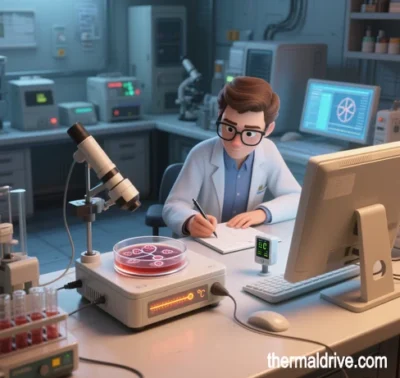
Thermal Drive: Definition and Applications in Biomedical Science and Medical Devices
I. Definition
Thermal drive refers to technologies that harness thermal energy or temperature gradients to trigger material deformation, energy conversion, or biochemical reactions. It leverages temperature sensitivity for precise system control, categorized into two types:
- Active Thermal Drive: External heat sources (e.g., lasers, resistive heaters) induce targeted responses.
- Passive Thermal Drive: Utilizes environmental temperature differences or endogenous heat from biological systems.
In biomedicine, thermal drive is pivotal for its non-invasiveness, spatiotemporal precision, and biocompatibility, making it essential for smart medical devices, targeted therapies, and biosensing.
II. Key Applications
- Smart Medical Device Actuation
- Shape-Memory Polymers (SMPs):
Thermally responsive SMPs (e.g., polycaprolactone, polyurethane) revert to pre-programmed shapes under body heat or localized heating. Applications include self-expanding vascular stents and biodegradable implants. - 4D-Printed Devices:
Post-surgical adaptive devices, such as orthopedic fixators that soften during healing to reduce stress shielding.
- Shape-Memory Polymers (SMPs):
- Targeted Drug Delivery
- Thermosensitive Nanocarriers:
Heat-triggered drug release in tumors (localized heating enhances efficacy while minimizing systemic toxicity). Biomimetic nanoparticles enable precision vascular disruption. - Transdermal Delivery Systems:
Microneedle arrays use thermal ablation to create microchannels for macromolecule delivery (e.g., insulin), replacing injections.
- Thermosensitive Nanocarriers:
- Disease Treatment and Physiological Modulation
- Hyperthermia Therapy:
Localized heating induces tumor cell apoptosis and synergizes with radiotherapy/chemotherapy. Magnetic nanoparticles enable image-guided thermal ablation. - Neuromodulation and Tissue Repair:
Thermally controlled flexible electrodes regulate neural signals for epilepsy or Parkinson’s treatment. Heat-responsive hydrogels dynamically release growth factors to accelerate wound healing.
- Hyperthermia Therapy:
- Medical Sensing and Diagnostics
- Thermoelectric Biosensors:
Detect subtle temperature changes for non-invasive glucose monitoring or inflammation tracking. High-sensitivity thermal transistors integrate into smart bandages for real-time wound assessment. - Imaging Enhancement:
Thermal metamaterials improve ultrasound/MRI resolution, while multifunctional materials enable dual-modal imaging and drug release.
- Thermoelectric Biosensors:
- Self-Powered Systems
- Implantable Devices:
Thermoelectric generators (TEGs) harvest body-environment temperature differences to power pacemakers or neurostimulators. - Wearable Health Monitors:
Flexible thermoelectric patches harvest body heat to sustain low-power sensors for continuous ECG or temperature tracking.
- Implantable Devices:
III. Technological Advantages
- Precision Control: Laser/magnetic thermal drive achieves micrometer-scale spatial resolution and millisecond response times.
- Biocompatibility: Degradable materials (e.g., PLCL elastomers) eliminate secondary surgeries.
- Multimodal Synergy: Integrated systems combine thermal, optical, and electrical modalities for diagnostics and therapy.
IV. Challenges and Future Directions
- Energy Efficiency: Current thermal drive systems often have low energy conversion efficiency (<10%), necessitating advanced materials like topological insulators.
- Non-Contact Actuation: Shift toward light/magnetic control for applications like space-deployable structures.
- Clinical Translation: Address risks of thermal damage (e.g., protein denaturation) and biofilm formation via optimized thermal thresholds.
- Interdisciplinary Innovation: Combine AI-driven thermal modeling with quantum sensing for subcellular-level control.
V. Conclusion
Thermal drive is redefining precision medicine and smart devices by converting thermal energy into mechanical, chemical, or electrical outputs. Its applications in minimally invasive surgery, targeted drug delivery, and self-powered systems highlight its transformative potential. As materials science and biothermodynamics converge, thermal drive may unlock breakthroughs from molecular diagnostics to organ regeneration, ushering in a new era of biomedical engineering.
Data sourced from public references. For collaboration or domain inquiries, contact: chuanchuan810@gmail.com





